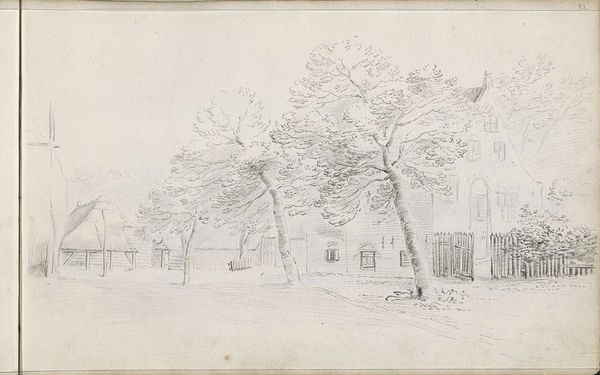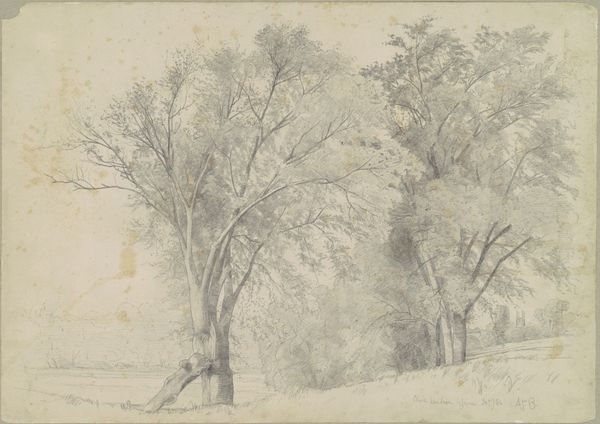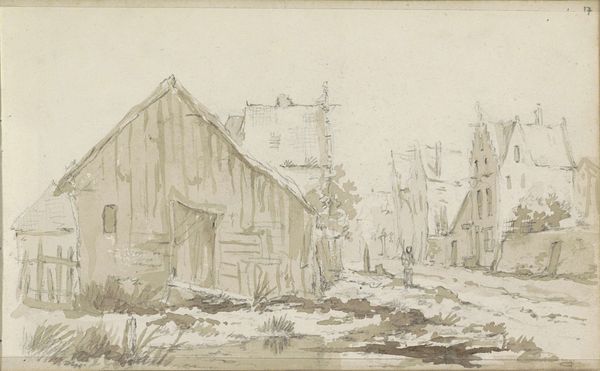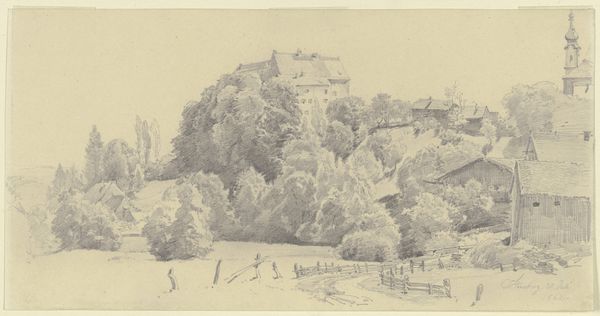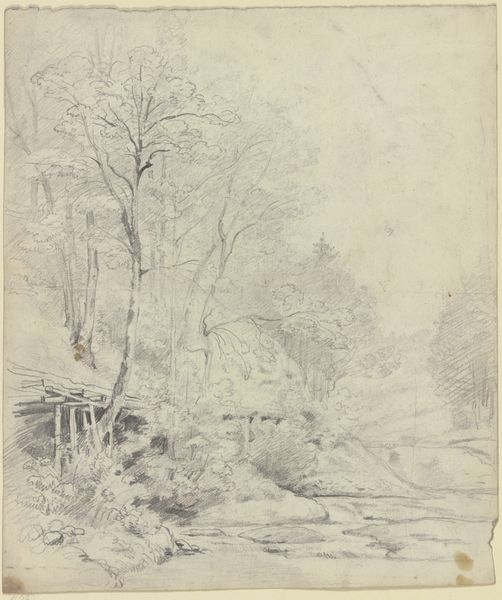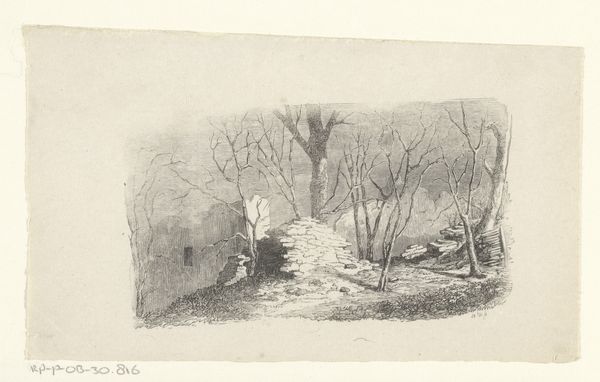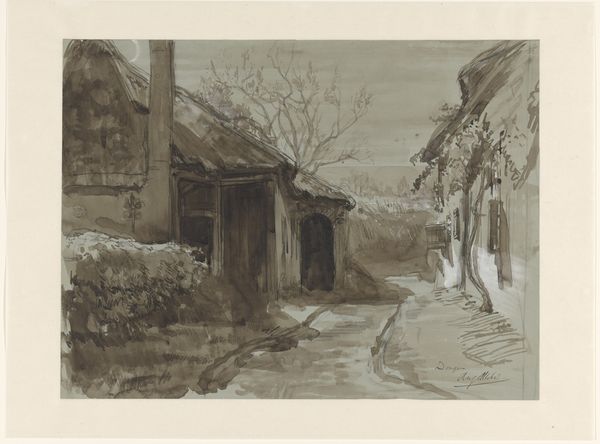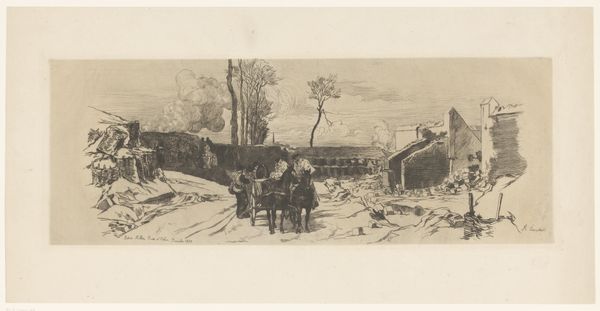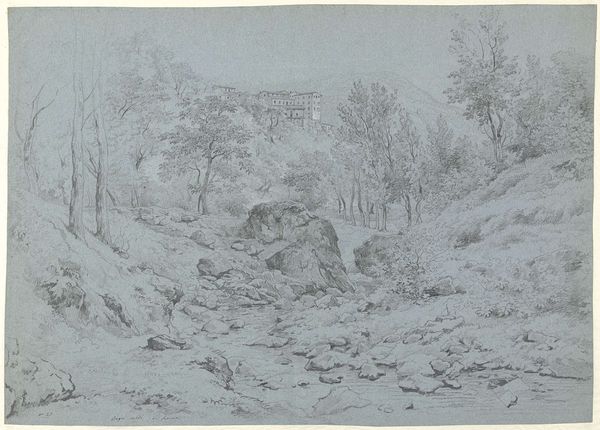
drawing, pencil
#
drawing
#
pencil sketch
#
landscape
#
pen-ink sketch
#
pencil
#
cityscape
Dimensions: height 270 mm, width 310 mm
Copyright: Rijks Museum: Open Domain
Curator: Welcome. Here we have "Watermolen," a pen and pencil drawing by Abraham Johannes Ruytenschildt, dating roughly between 1788 and 1841. What's your immediate reaction? Editor: The scene feels quite serene, almost dreamlike. The delicate shading and soft lines evoke a sense of quiet nostalgia, like a faded memory. Curator: Yes, observe how Ruytenschildt’s mastery of line and tone creates a harmonious composition. Note the structural integrity of the watermill itself, and how it anchors the composition, juxtaposed with the fluidity of the water. He masterfully balances precision and looseness. Editor: For me, I think the choice to depict a watermill itself carries connotations. Watermills symbolize not just rural industry, but also a community’s reliance on natural resources, reflecting on societal dependence. What labor and socio-economic relationships did the watermill sustain? What was its environmental impact? Curator: True, but I focus primarily on the artwork. How Ruytenschildt skillfully guides the eye from the darker foreground, with those sharply rendered trees, back towards the blurred facade of the mill itself using the water feature. Editor: And what of that partial obscuring, then? Is this not, intentionally or not, referencing the obscuring or erasure of similar stories, histories? It's also important to address the historical context. Was Ruytenschildt, in capturing these rural scenes, perhaps idealizing a society structured by power dynamics that benefitted certain groups over others? Curator: Well, those ideas aren’t explicitly present. His handling of perspective, though not strictly accurate, lends depth to the image, creating an immersive space for the viewer. I think it's about his exploration of tonal variation, ranging from light washes to denser pencil marks. The interplay between these contrasting shades animates the scene and brings it to life. Editor: Yes, and understanding that those artistic choices aren't neutral—they contribute to, or challenge, existing norms and power structures. The seeming "timelessness" might mask deeper societal inequalities of labor or accessibility of resource. Curator: Interesting, an activist reading, even, but for me it stands, more simply, as a landscape masterfully created through balance of form and expert application of the techniques available. Editor: Indeed. Hopefully, this look offers avenues into appreciating not just the surface beauty but the multiple layers within it, socially and aesthetically.
Comments
No comments
Be the first to comment and join the conversation on the ultimate creative platform.


